Introduction
In the rapidly evolving landscape of business operations, Robotic Process Automation (RPA) stands out as a transformative force, redefining how organizations approach efficiency and productivity. By deploying software robots to handle mundane, repetitive tasks, companies can significantly reduce human error and operational costs while empowering their workforce to focus on strategic initiatives that foster innovation.
The integration of RPA is not merely a trend; it is a necessity for organizations striving to maintain a competitive edge in an increasingly complex marketplace. From enhancing compliance and accuracy to providing scalable solutions, the benefits of RPA are compelling.
However, the journey to successful implementation is not without its challenges. Understanding these obstacles and exploring the promising future of RPA, especially when combined with artificial intelligence, is crucial for any organization looking to harness its full potential.
This article delves into the definition, benefits, challenges, and future trends of RPA, offering a comprehensive guide for organizations ready to embrace this game-changing technology.
Introduction to Robotic Process Automation (RPA): Definition and Importance
Robotic Process Automation (RPA) involves the deployment of software robots to automate repetitive, rule-based tasks that are typically handled by human workers. This technology has become a cornerstone of enterprise automation, significantly improving performance, minimizing errors, and empowering employees to concentrate on higher-value tasks requiring critical thinking and creativity. A notable case study illustrates this: a mid-sized healthcare company faced challenges such as manual data entry errors, slow software testing, and difficulties integrating legacy systems without APIs.
To address these issues, the company implemented GUI automation to streamline data entry, software testing, and legacy system integration, achieving a remarkable 70% reduction in data entry errors and a 50% acceleration in testing processes. The ROI from this implementation was realized within six months. By integrating RPA, organizations can enhance their standing in the RPA Gartner Quadrant while streamlining processes across various departments, including finance, human resources, and customer service, leading to significant improvements in productivity and service delivery.
In the telecom sector, for instance, operators leverage RPA for customer service management and database administration, allowing support representatives to concentrate on more complex tasks. Recent findings indicate that workers save approximately 3.6 hours per week thanks to automation, underscoring its potential to transform workplace dynamics. With 65% of participants in a 2022 survey by Robocorp recognizing the benefits of flexible, usage-based pricing models for RPA solutions, the acknowledgment of RPA’s abilities in enhancing excellence is undeniable.
As key participants in the RPA market, including UiPath, Automation Anywhere, and Blue Prism, guide the trend, the momentum for RPA adoption keeps increasing, further reinforcing its position in the RPA Gartner Quadrant as a vital instrument for improving operational effectiveness.
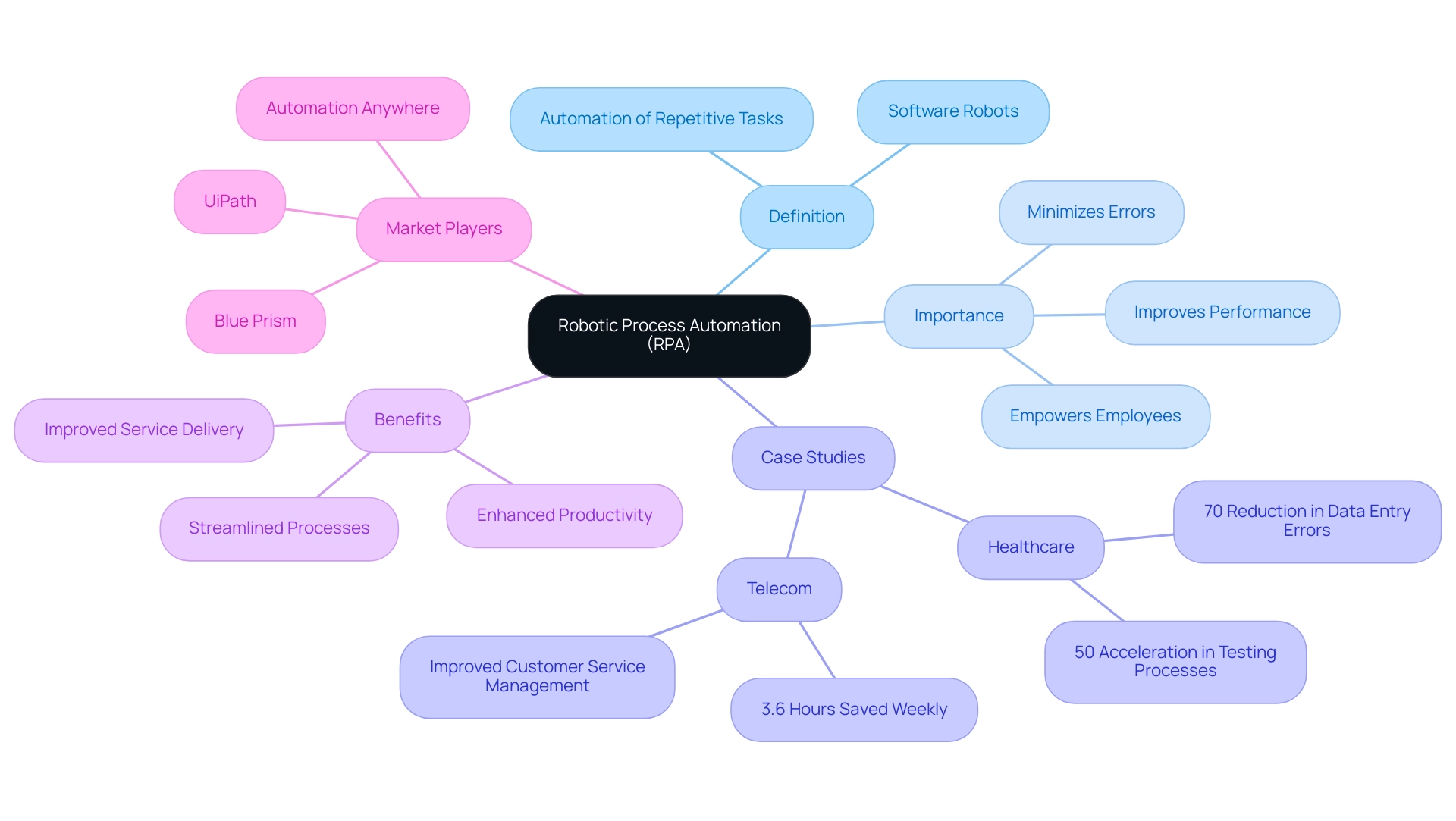
Understanding the Gartner Magic Quadrant for RPA: Evaluation Criteria and Insights
The RPA Gartner Quadrant is an essential resource for organizations aiming to evaluate vendors based on execution capabilities and vision completeness, especially in a rapidly evolving AI landscape. Key evaluation criteria include:
- Product functionalities
- Market responsiveness
- Overall customer experience
These criteria are critical for overcoming technology implementation challenges. This comprehensive framework illuminates the competitive landscape, enabling organizations to identify RPA solutions that align with their specific goals, enhance operational efficiency, and deliver significant cost savings.
Trusted by top organizations, Appian is recognized for driving transformational process change, while Microsoft has emerged as a formidable competitor in the RPA market. Leveraging insights from the RPA Gartner Quadrant empowers organizations to make informed decisions and effectively navigate vendor positioning to maximize their automation investments. As Tim Yalich, Head of Auto Strategy for Wolters Kluwer, aptly noted, ‘More impressively, despite a ransomware attack that threatened many enterprises into a paper-based environment, many saw opportunities to pivot and remain digital, validating the importance of digitizing their entire workflow operations to meet customer needs.’
This viewpoint emphasizes the importance of implementing strong RPA solutions to improve productivity and resilience. Furthermore, tailored AI solutions can assist organizations in seamlessly integrating RPA into their operations, ensuring they remain competitive in this evolving landscape. It’s important to remember that Gartner disclaims all warranties regarding its research publications and does not endorse any vendor, product, or service depicted in its research.
Recently, Appian’s legal victory over Pegasystems in a $2.036 billion lawsuit illustrates the competitive dynamics at play and may influence its standing in the market. For organizations aiming to improve their performance through RPA, investigating these solutions further could be crucial.
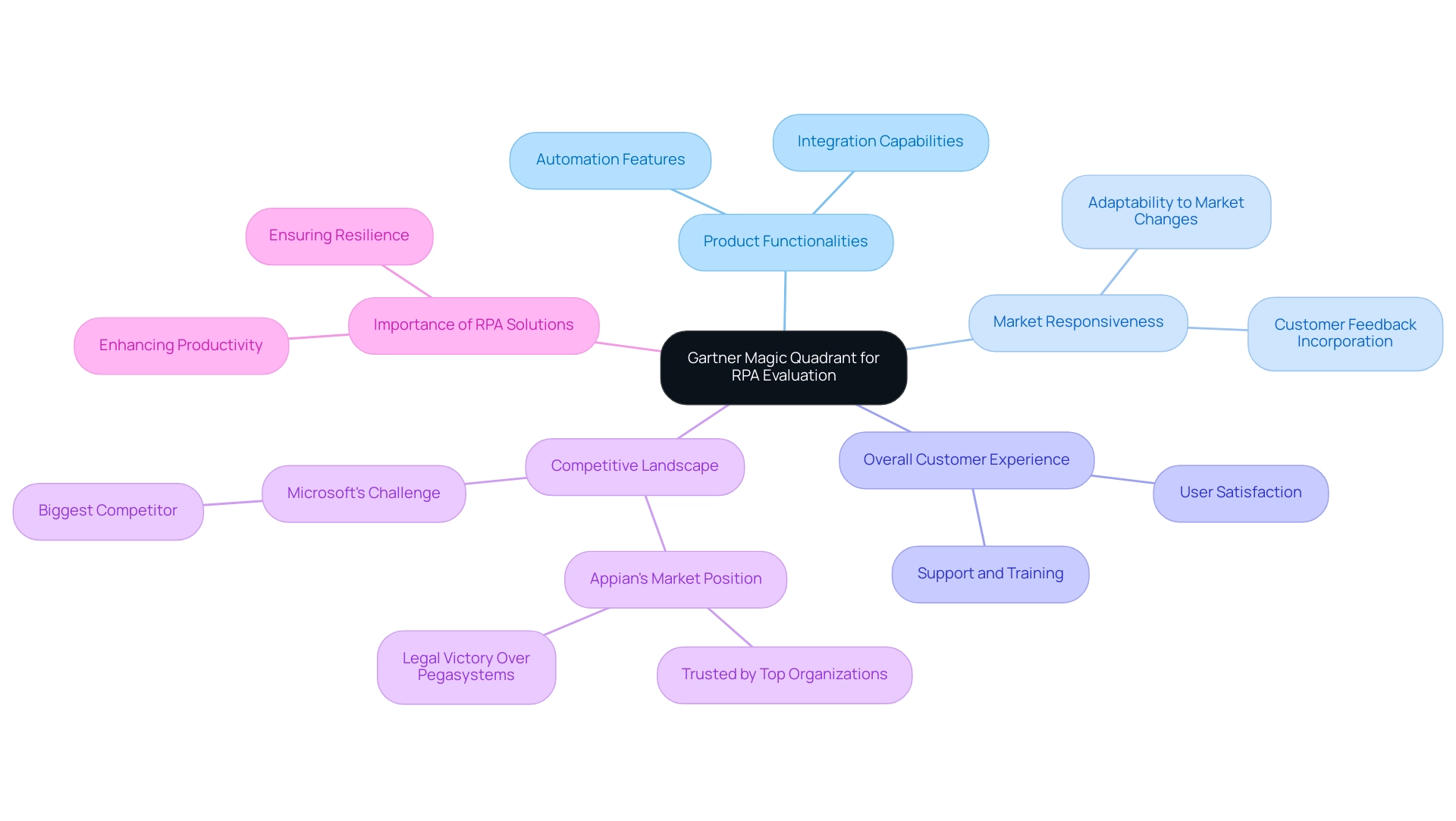
Key Benefits of Implementing RPA in Business Operations
Implementing Robotic Process Automation (RPA) in organizational operations unlocks a multitude of advantages that can transform efficiency and drive success. Key benefits include:
-
Increased Productivity: By automating routine and repetitive tasks, employees are freed to concentrate on strategic initiatives that add greater value to the organization.
This shift not only boosts morale but also enhances overall performance. In fact, robots are expected to take over 20% of current routine tasks, with some believing they could handle up to 52% of work capacity, showcasing the transformative potential of RPA. Solutions like EMMA RPA and Microsoft Power Automate exemplify user-friendly digitalization, allowing organizations to streamline workflows and enhance productivity effectively. -
Cost Efficiency: RPA significantly reduces operational costs by minimizing the reliance on manual labor and the potential for human errors. As evidenced by recent findings, over 65% of respondents in a Robocorp 2022 survey acknowledged the potential benefits of usage-based pricing models for RPA, underlining the financial advantages that can be realized.
-
Enhanced Compliance: Automated processes provide a consistent approach to adhering to regulatory requirements, minimizing compliance risks and ensuring that operations remain within legal and industry standards.
-
Improved Accuracy: RPA systems are designed to eliminate human errors, resulting in higher quality outputs and reduced rework, which is crucial for maintaining competitive advantage.
-
Scalability: RPA solutions can be easily scaled to accommodate fluctuating organizational needs, allowing entities to adapt swiftly to market changes without incurring significant additional costs.
As Cem Dilmegani noted, the RPA market has experienced a remarkable growth rate of 22.1% in 2023, surpassing other sectors, which indicates that businesses are increasingly recognizing the value of these technologies as reflected in the RPA Gartner quadrant. Additionally, the strong funding environment for RPA firms—such as UiPath’s $1.2 billion, Automation Anywhere’s $840 million, Blue Prism Group’s $182 million, and Workfusion’s $180 million—emphasizes the industry’s dedication to improving productivity and reducing costs. The case study titled ‘RPA Adoption Across Industries‘ illustrates how RPA is being increasingly embraced in sectors like healthcare, finance, and manufacturing to automate complex, industry-specific processes, contributing to improved efficiency.
By embracing RPA, organizations can address challenges such as task repetition fatigue and staffing shortages, improving their operational capabilities and positioning themselves for sustained success in a competitive marketplace. Additionally, the integration of robotics in the workplace is visually represented by a stylized illustration featuring a human figure collaborating with robotic figures, emphasizing the synergy between human intelligence and automation. To explore how RPA can transform your business, book a free consultation today.
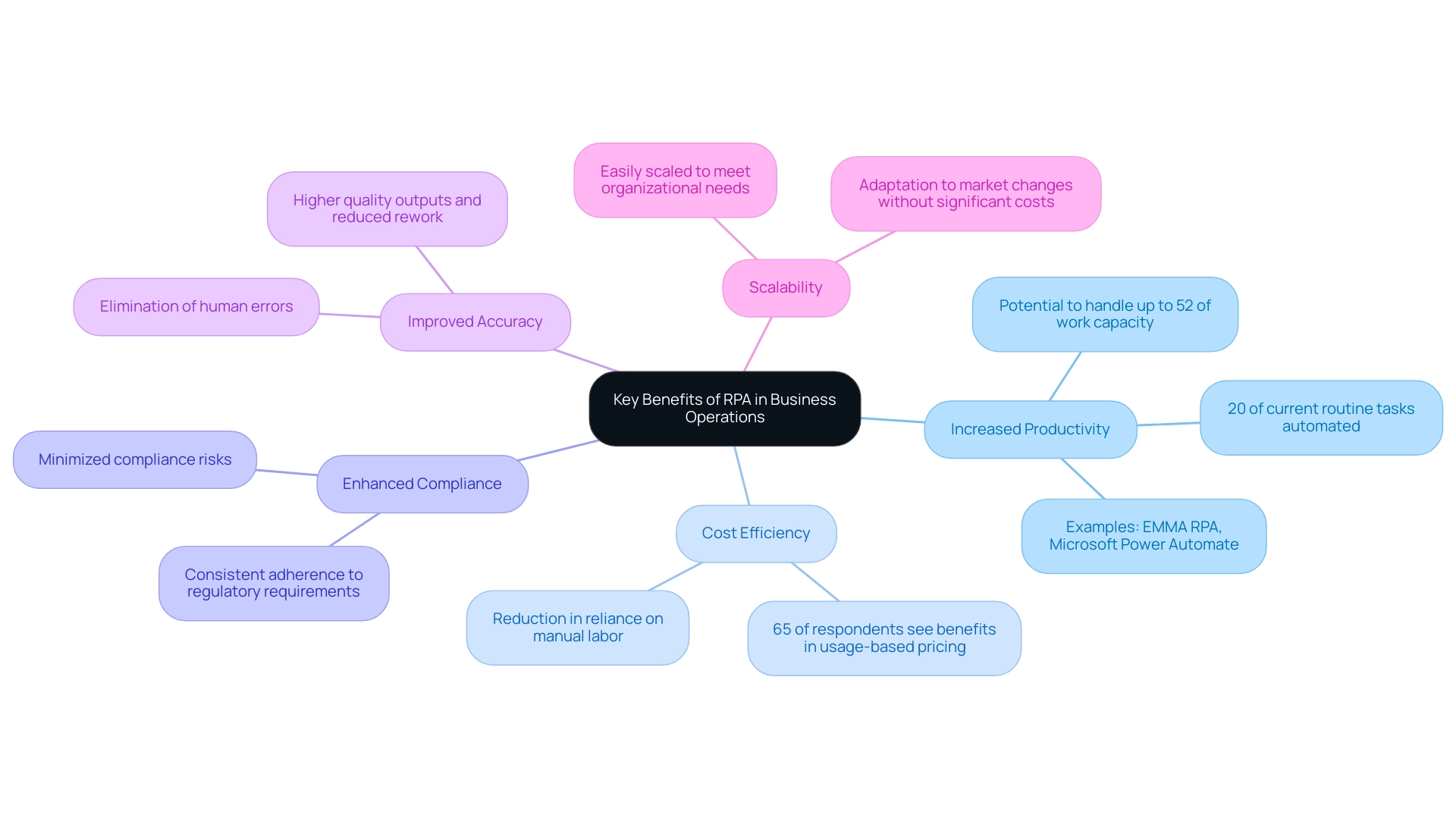
Challenges in RPA Deployment: Navigating Common Obstacles
Although the benefits of Robotic Process Automation (RPA) are significant, organizations often face various challenges during its implementation that can impede productivity. Key challenges include:
- Resistance to Change: Employees often hesitate to embrace new technologies due to concerns about job security and shifts in work processes.
For instance, a study examining RPA’s influence on employee acceptance within a major oil and gas company’s finance and accounting unit revealed that RPA significantly affects how employees adapt to technological changes, underscoring the importance of addressing acceptance to ensure organizational success. This is particularly relevant as statistical analysis has shown that companies automating economy and accounting functions experienced less downsizing compared to those automating other functions, emphasizing the positive impacts RPA can have on workforce stability.
-
Integration Issues: Achieving seamless interoperability between RPA tools and existing systems can be a complex endeavor, potentially leading to operational disruptions if not managed properly.
-
Lack of Expertise: A prevalent barrier to successful RPA implementation is the insufficient knowledge surrounding its capabilities and applications, which can stall progress.
-
Process Selection: Identifying the right processes for automation is crucial; not every task is suitable for RPA. To effectively navigate these challenges, organizations should prioritize investing in change management strategies, provide comprehensive training to employees, and conduct thorough assessments of processes to determine automation suitability.
By proactively addressing these issues, companies can facilitate smoother RPA adoption and leverage its full potential. Furthermore, with our risk-free ROI-driven GUI automation services, organizations can automate repetitive tasks, address staffing shortages, and modernize outdated systems confidently, ensuring they see measurable results, such as the mid-sized company’s success in reducing data entry errors by 70% and enhancing workflow performance by 80%. As part of our promise, you only pay if the automation process is delivered as planned, ensuring a risk-free investment.
Our step-by-step methodology includes:
- Accessing a process of yours that you would like to automate,
- Calculating the efforts required to automate the process,
- Estimating the time savings you will see after the project and calculating the ROI, and
- Automating the process, done by a certified professional on our side.
As McKinsey predicts, sectors like medicine and pharma could save as much as $100 billion by depending on AI and big data, illustrating the broader implications of RPA across industries.
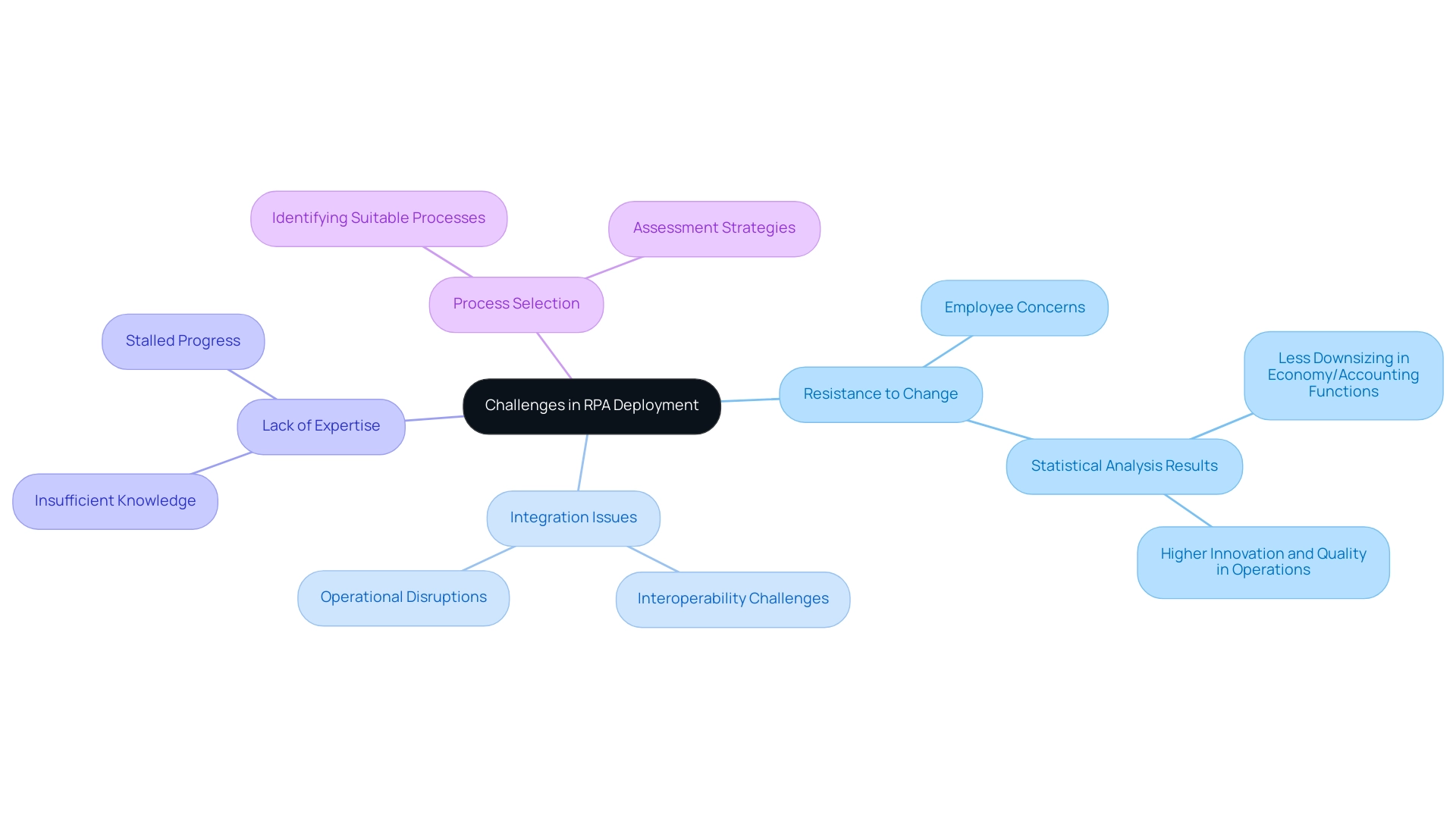
The Future of RPA: Integration with AI and Emerging Trends
The future of Robotic Process Automation (RPA) is intricately linked to advancements in artificial intelligence (AI), particularly as organizations often grapple with challenges such as poor master data quality and hesitation in adopting AI due to perceived complexity and cost. By combining AI with RPA, companies can attain intelligent automation, where machines not only perform tasks but also learn and adjust over time, significantly improving productivity. RPA continues to alleviate manual and repetitive work, allowing employees to focus on higher-value tasks.
Key emerging trends in this arena include:
-
Cognitive Automation: This fusion of AI and RPA enables the management of more complex tasks requiring nuanced decision-making, addressing the AI implementation paralysis often caused by data inconsistencies. RPA can directly mitigate these issues by ensuring that data is consistently processed and validated before being utilized in AI applications.
-
Predictive Analytics: Utilizing data to anticipate needs and improve workflows, this trend promotes proactive, data-driven strategies that enhance performance. RPA plays a crucial role in gathering and cleaning data, thus providing a solid foundation for predictive analytics.
-
Enhanced User Interfaces: Innovations in user experience design improve interactions between users and automated systems, making them more intuitive and effective, which is crucial for overcoming adoption hesitations. For instance, Social’s AI chatbot can respond to inquiries in just 2.7 seconds, showcasing the efficiency of AI in real-world applications.
Furthermore, trends in Intelligent Process Automation (IPA) demonstrate how integrating AI with RPA leads to personalized customer experiences and deeper insights into customer behavior. Organizations that proactively adopt these trends are poised to drive innovation and attain operational excellence, positioning themselves as leaders in an increasingly competitive landscape. Moreover, the synergy between RPA and Business Intelligence can facilitate enhanced data-driven insights, enabling informed decision-making that drives growth and innovation.
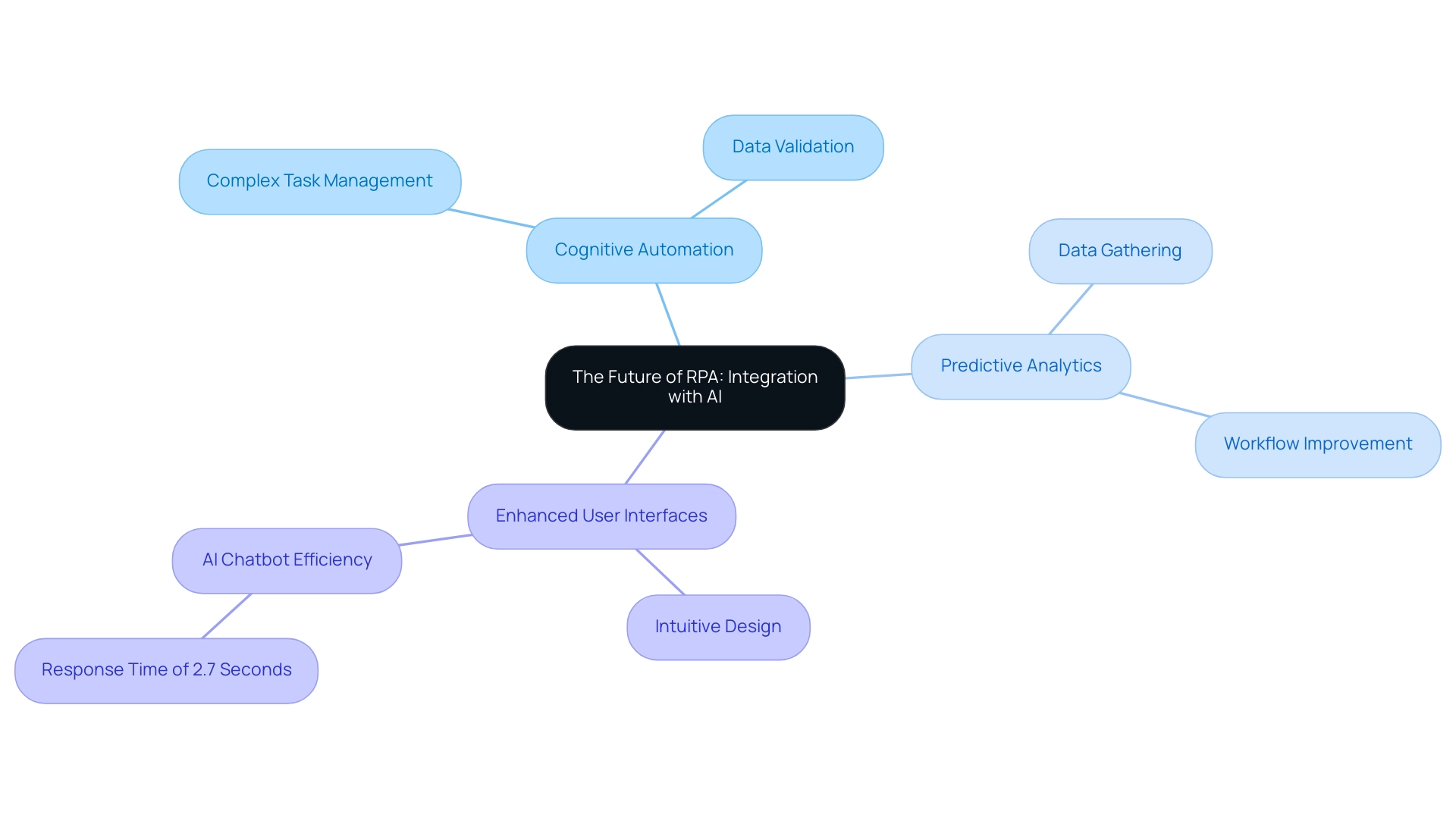
Conclusion
The integration of Robotic Process Automation (RPA) into business operations is not just a strategic advantage; it is a critical step towards achieving operational excellence and maintaining competitiveness in a rapidly changing marketplace. By automating repetitive tasks, organizations can improve productivity, reduce costs, and enhance accuracy, allowing employees to focus on high-value activities that drive innovation and growth. The compelling case studies and statistics presented highlight how businesses across various sectors have realized substantial returns on investment through RPA implementations.
However, the journey towards successful RPA adoption is fraught with challenges, including resistance to change and integration issues. It is essential for organizations to address these obstacles proactively by investing in change management and employee training. By doing so, companies can facilitate a smoother transition and unlock the full potential of RPA to transform their operations.
Looking ahead, the future of RPA is intertwined with advancements in artificial intelligence, paving the way for even greater efficiencies through intelligent automation. Embracing emerging trends such as cognitive automation and predictive analytics will empower organizations to not only streamline processes but also enhance decision-making capabilities.
In conclusion, organizations that prioritize RPA and its integration with AI are well-positioned to thrive in an increasingly competitive landscape. The time to act is now—embracing this transformative technology can lead to significant improvements in efficiency, cost savings, and ultimately, sustained success.

